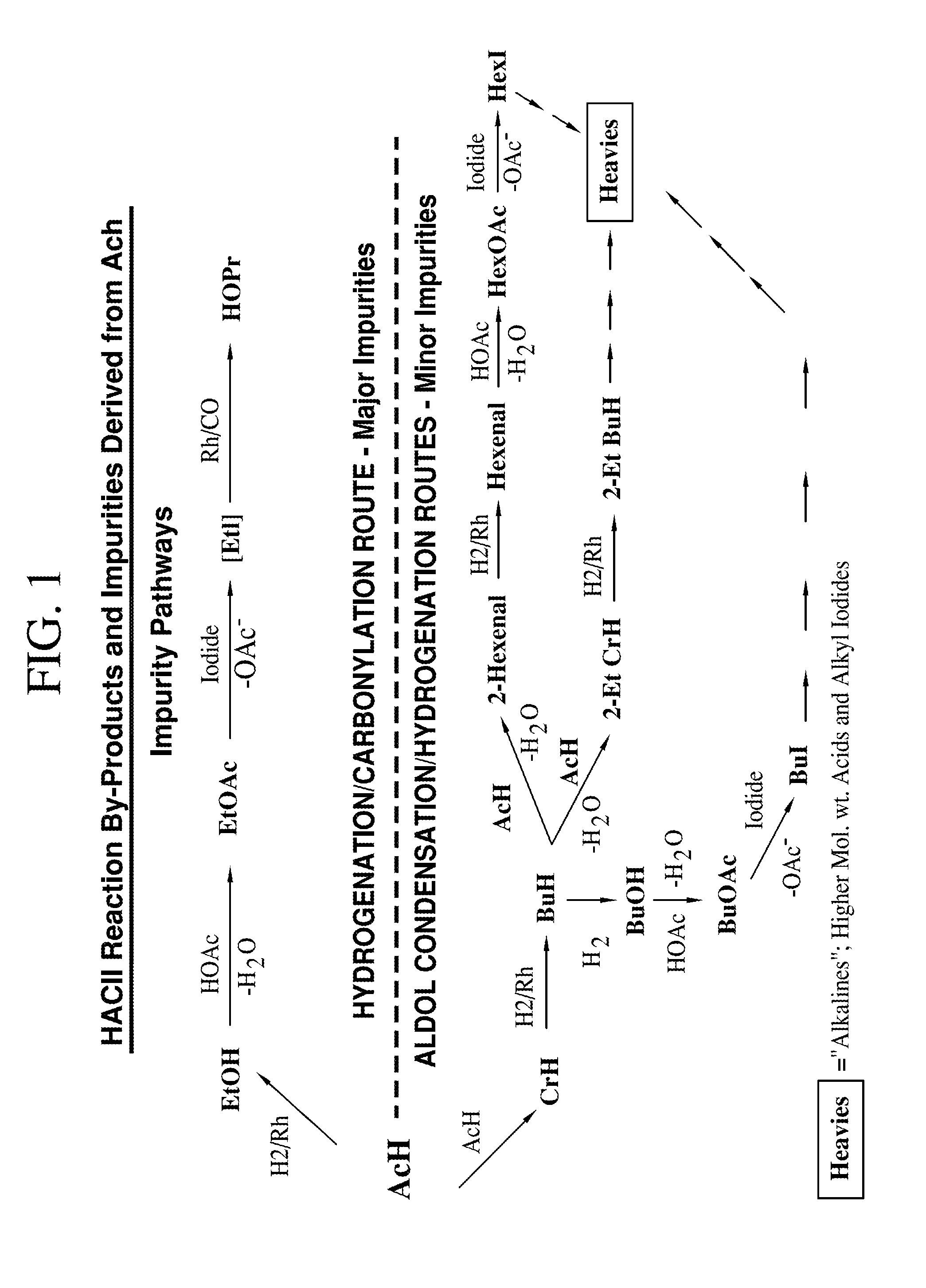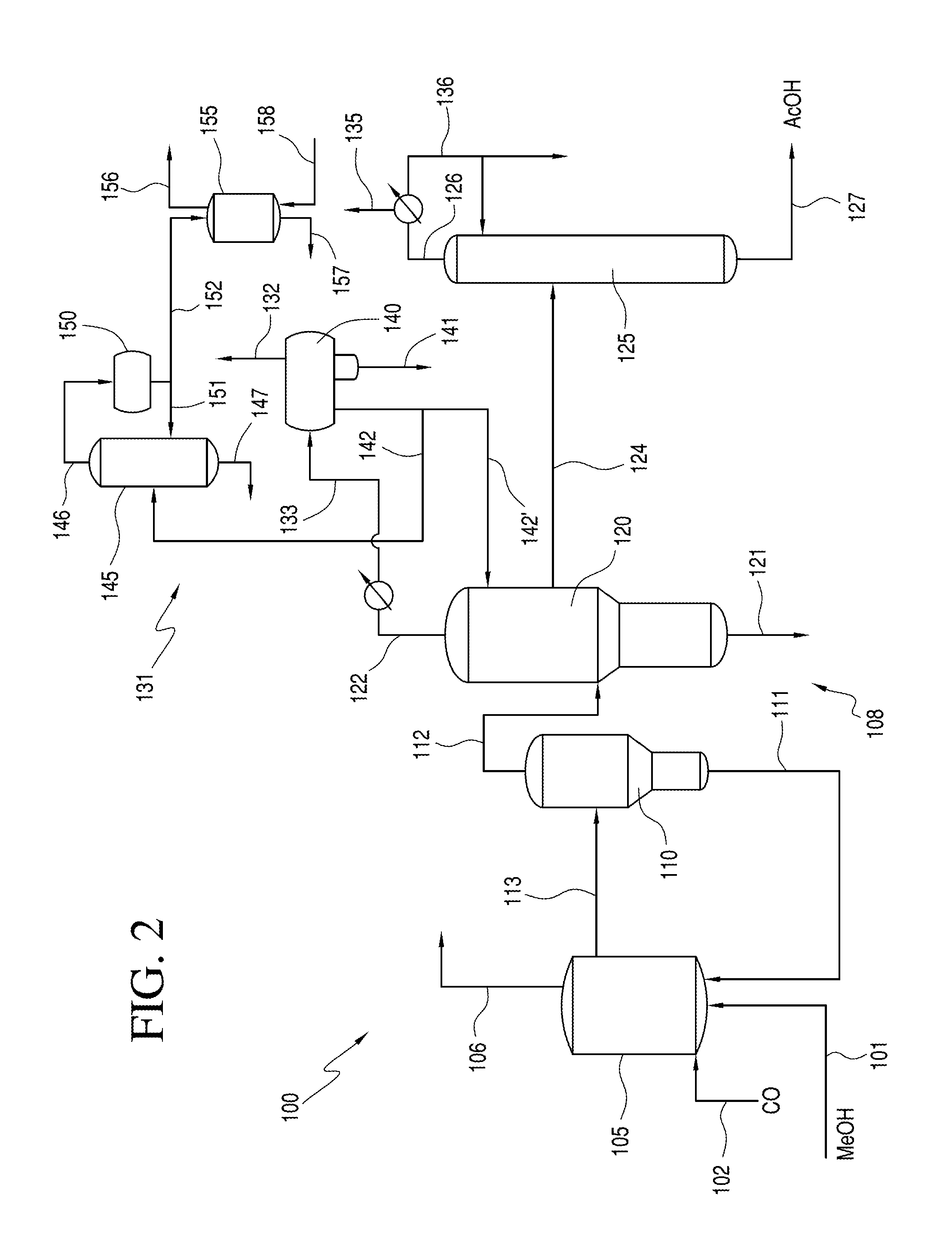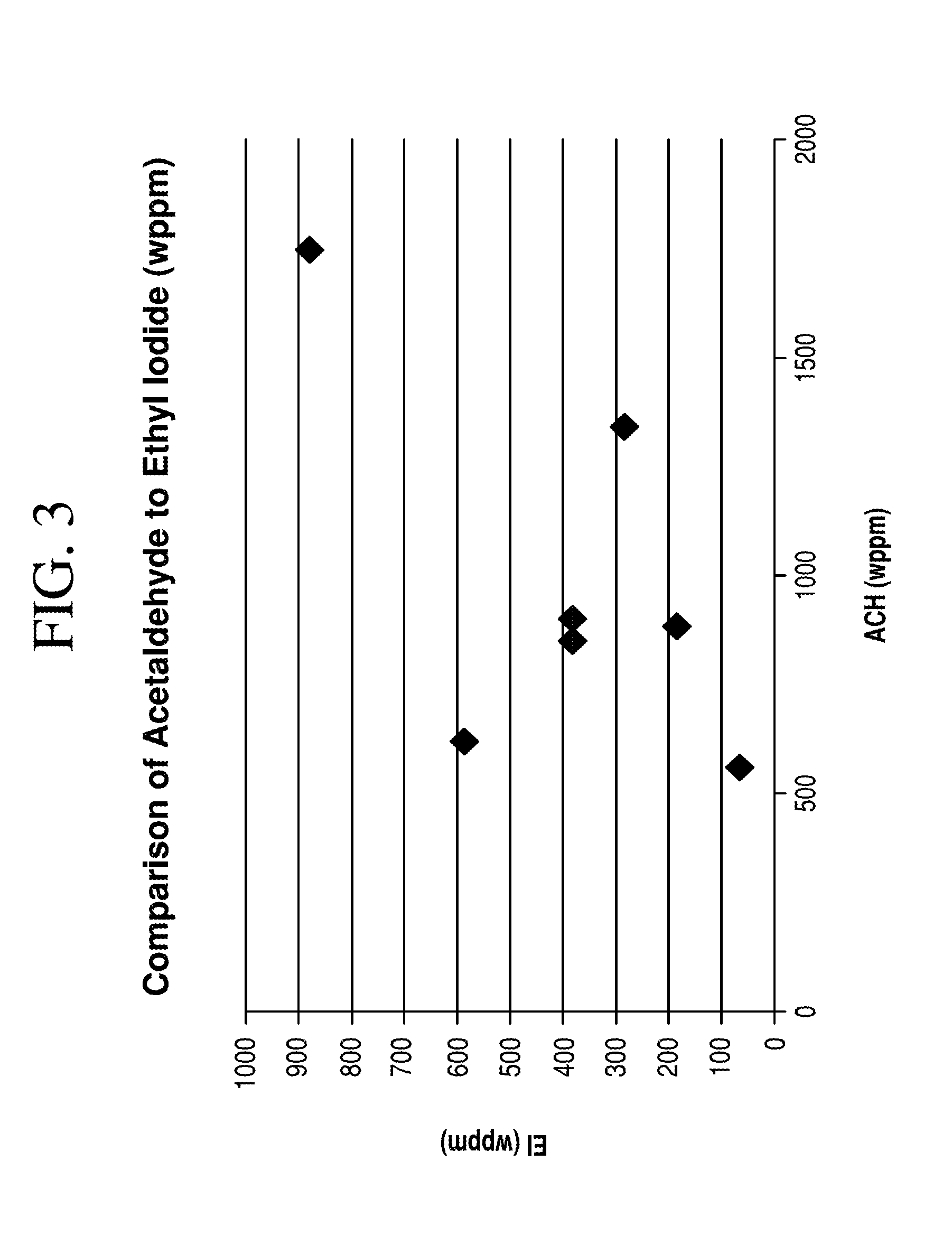Processes for producing acetic acid from a reaction medium having low ethyl iodide content
a technology of ethyl iodide and reaction medium, which is applied in the preparation of carboxylic carbon monoxide, carboxylic compound preparation, organic chemistry, etc., can solve the problem of little art concerning the removal or control of the formation of ethyl iodide, and achieve the effect of reducing the propionic concentration
- Summary
- Abstract
- Description
- Claims
- Application Information
AI Technical Summary
Benefits of technology
Problems solved by technology
Method used
Image
Examples
example 1
Samples A-C
[0156]Carbon monoxide and methanol, a rhodium catalyst mixture comprising a rhodium catalyst, methyl iodide, lithium iodide and methyl acetate were fed to a microunit. The methanol contained from 5 to 15 wppm ethanol. The temperature was kept constant as was the reaction pressure, while other conditions and components were varied. The concentrations of acetaldehyde and ethyl iodide were measured and are reported in Table 1 below.
example 2
Sample D-F
[0157]Carbon monoxide, methanol, a rhodium catalyst mixture comprising a rhodium catalyst, methyl iodide, lithium iodide and methyl acetate were fed to a pilot plant. The temperature was kept essentially constant (within 2° C. between all examples) while other conditions and components were varied. The concentrations of acetaldehyde and ethyl iodide were measured and are reported in Table 1 below. Example F is a comparative example while Samples A-E are inventive.
TABLE 1Acetaldehyde and Ethyl Iodide Concentration in Reaction MixtureH2partialH2 inAcH:EITemp.PressurepressureMeIMeOAcCOAcHEIweightSample(° C.)(atm)(atm)(wt. %)(wt. %)(mol. %)(wppm)(wppm)ratioA195280.2711.22.90.005560648.75B195280.3511.42.50.198801854.76C195280.511.32.80.2813422834.74D196260.2711.83.20.199003802.37E19628.50.3512.530.068503802.24F198270.4011.42.60.1117508791.99
[0158]As shown in Table 1 and as plotted in FIG. 3, Samples A-F indicate that the relationship between acetaldehyde concentration and ethyl...
example 3
[0159]The reaction mixture of each of Samples A-F was removed from the reactor and passed through a flash vessel, light ends column and drying column as described in FIG. 2. No heavy ends removal of the propionic acid, or of any components having a higher boiler point than acetic acid, was performed. The propionic acid concentration in the acetic acid product was measured. The results are shown in Table 2 below, in comparison to the acetaldehyde concentration and ethyl iodide concentration in the reaction mixture.
TABLE 2Propionic Acid Concentration in Acetic Acid ProductAcHEIHOPrEI:HOPrSample(wppm)(wppm)(wppm) weight ratioA560641170.55B8801851591.16C13422832501.13D9003802601.46E8503802361.61F17508793272.7
[0160]As shown in Table 2, when ethyl iodide content is less than 750 wppm and acetaldehyde concentration is less than 1500 wppm, propionic acid concentration in the acetic acid product is less than 250 wppm.
PUM
| Property | Measurement | Unit |
|---|---|---|
| weight ratio | aaaaa | aaaaa |
| wt. % | aaaaa | aaaaa |
| total pressure | aaaaa | aaaaa |
Abstract
Description
Claims
Application Information
 Login to View More
Login to View More - R&D
- Intellectual Property
- Life Sciences
- Materials
- Tech Scout
- Unparalleled Data Quality
- Higher Quality Content
- 60% Fewer Hallucinations
Browse by: Latest US Patents, China's latest patents, Technical Efficacy Thesaurus, Application Domain, Technology Topic, Popular Technical Reports.
© 2025 PatSnap. All rights reserved.Legal|Privacy policy|Modern Slavery Act Transparency Statement|Sitemap|About US| Contact US: help@patsnap.com



